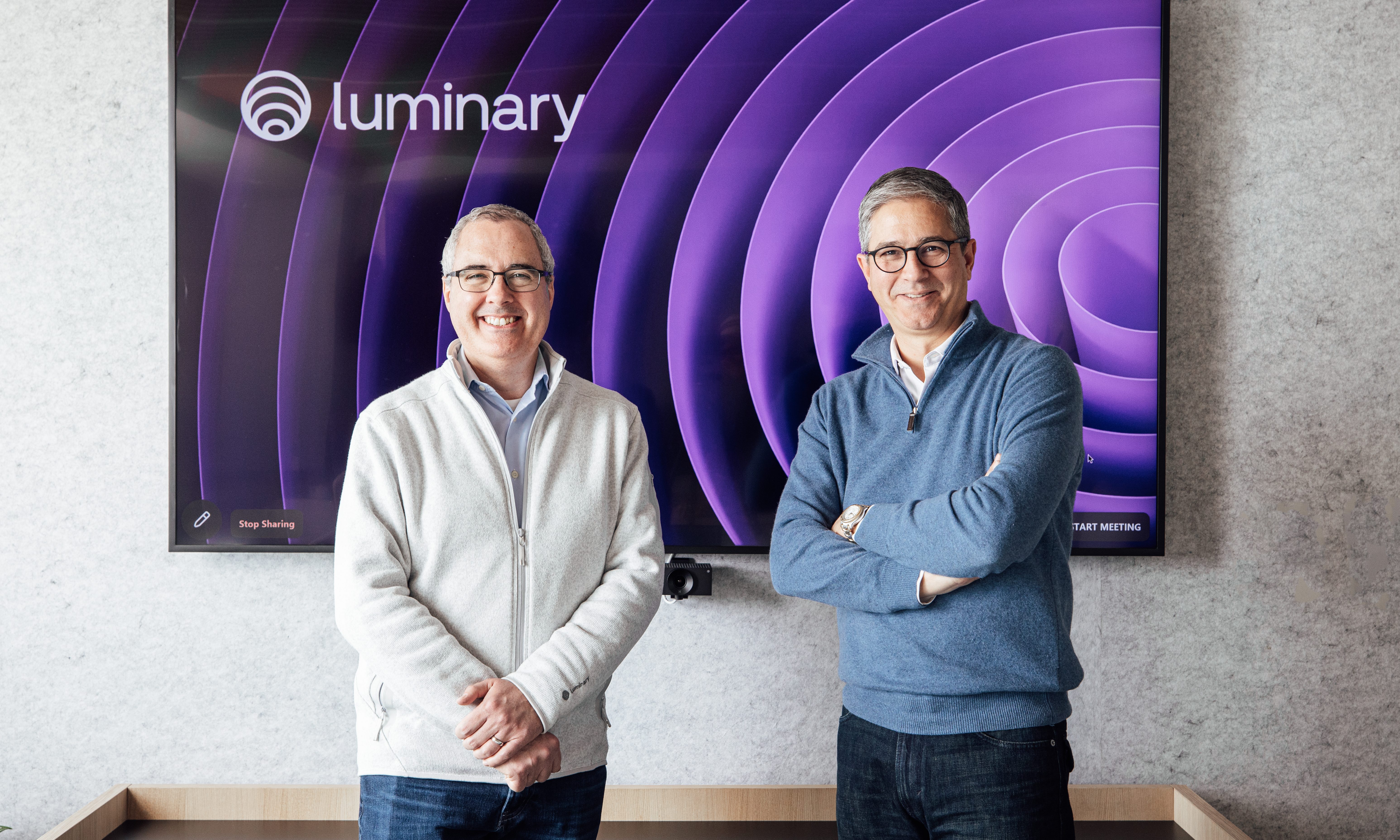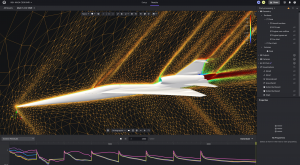 CLOUD
CLOUD
 CLOUD
CLOUD
 CLOUD
CLOUD
Luminary Cloud Inc. is launching out of stealth today with $115 million in funding and a computer-aided engineering platform delivered as a service that it says can run simulations up to 100 times faster than is possible on a desktop computer.
The company calls its platform a cloud supercomputer and positions it as an alternative to mainstream CAE applications from providers such as Ansys Inc., Siemens AG and Dassault Systemes SA, which run on desktop workstations. Through a partnership with Nvidia Corp., the company said, it can make a nearly limitless amount of graphics processing unit power available on demand for computationally intensive simulations.
The platform is based on Google LLC’s Cloud Platform and is expected to expand to other cloud infrastructure providers. Co-founder and Chief Executive Jason Lango (pictured, left) said it’s a much more powerful resource than engineers have available with even the most powerful desktop computers.
“If a customer wants to perform a big simulation, we can spin up hundreds of GPUs,” he said. “When that job is done, we spin them all down so the customer gets essentially a supercomputer on demand and pays by the minute.”

Jet air flow simulation post-processing
Digital simulations are used in research and development to test prototypes under real-world conditions. The computationally intensive process can incorporate factors such as air flows (adjacent), pressure distributions, geothermal forces and fluid dynamics to enable designers to modify and improve their before committing to a physical prototype.
Luminary Cloud didn’t build the infrastructure itself but is “effectively renting the GPUs from Google,” Lango said. We have some fairly sophisticated resource scheduling, where we reserve capacity so users can immediately get results. We have optimized to perform well on Nvidia GPUs, so we use what GPUs are available.”
The company’s proprietary software was built from scratch to perform simulation and visualizations, performing server-side rendering on clusters of graphics-optimized GPUs. It can import data from most major CAE platforms and export to Visualization Toolkit, an open-source format for 3D computer graphics, image processing, volume rendering and visualization. Its application program interfaces are published and a software development kit supports Python notebooks and scripts for simulation and analysis.
The software includes an engineering design copilot called Lumi AI that helps with tedious tasks like mesh generation by intelligently adapting the computational mesh for higher accuracy and efficiency.
Lango said he found inspiration in Snowflake Inc.’s consumption model. “We’ve followed the Snowflake model with published pricing based on usage,” with discounts for reserved capacity, he said. “An advantage of a consumption-based platform is you can hit a button and there’s very little incremental cost to share,” he said. Pricing hasn’t yet been specified.
Lango previously co-founded virtualization startup Bracket Computing Inc., which raised $130 million before being acquired by VMware Inc. in 2018. Co-founder Juan Alonso (pictured, right) started Stanford University’s Aerospace Design Laboratory and was previously a director of aeronautics research programs at the National Aeronautics and Space Administration.
The company has taken its time in stealth mode. It was founded in 2019 and has been onboarding customers since last year. “We had an amazingly fast start, going from two customers at the start of the year to 33 prepaid by the end,” Lango said. Reference customers include Joby Aviation Inc., Piper Aircraft Inc., Trek Bicycle Corp. and Puma SE subsidiary Cobra Golf. Funding was led by Sutter Hill Ventures LP.
Support our open free content by sharing and engaging with our content and community.
Where Technology Leaders Connect, Share Intelligence & Create Opportunities
SiliconANGLE Media is a recognized leader in digital media innovation serving innovative audiences and brands, bringing together cutting-edge technology, influential content, strategic insights and real-time audience engagement. As the parent company of SiliconANGLE, theCUBE Network, theCUBE Research, CUBE365, theCUBE AI and theCUBE SuperStudios — such as those established in Silicon Valley and the New York Stock Exchange (NYSE) — SiliconANGLE Media operates at the intersection of media, technology, and AI. .
Founded by tech visionaries John Furrier and Dave Vellante, SiliconANGLE Media has built a powerful ecosystem of industry-leading digital media brands, with a reach of 15+ million elite tech professionals. The company’s new, proprietary theCUBE AI Video cloud is breaking ground in audience interaction, leveraging theCUBEai.com neural network to help technology companies make data-driven decisions and stay at the forefront of industry conversations.